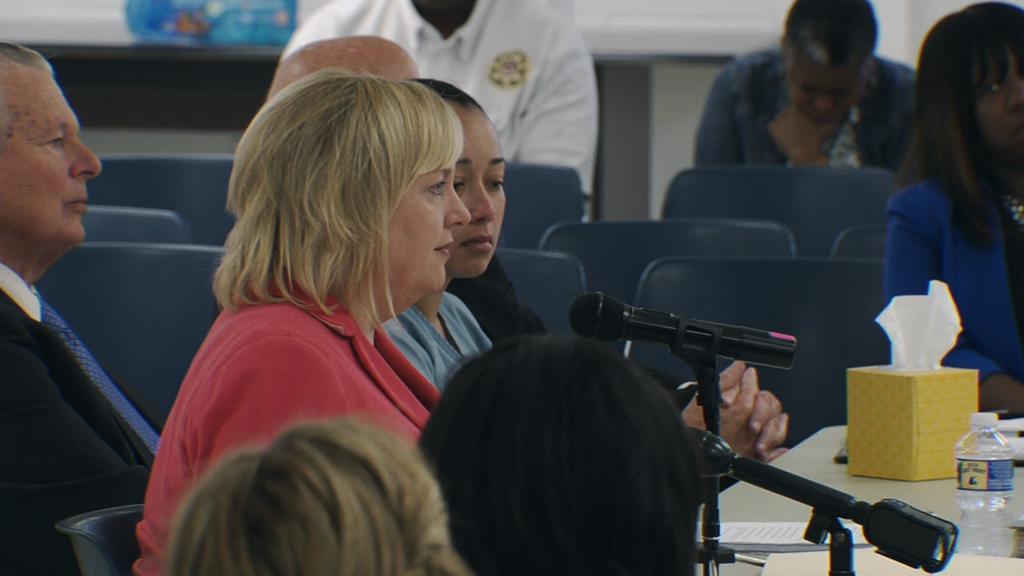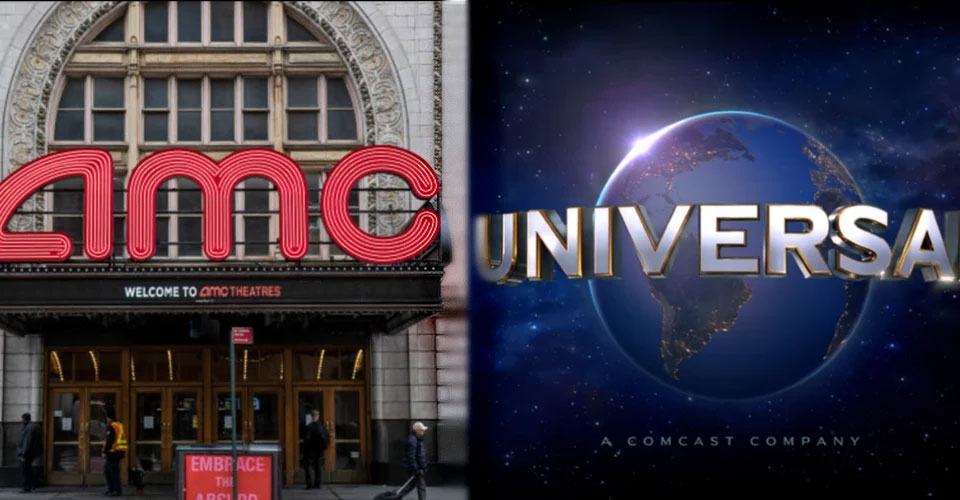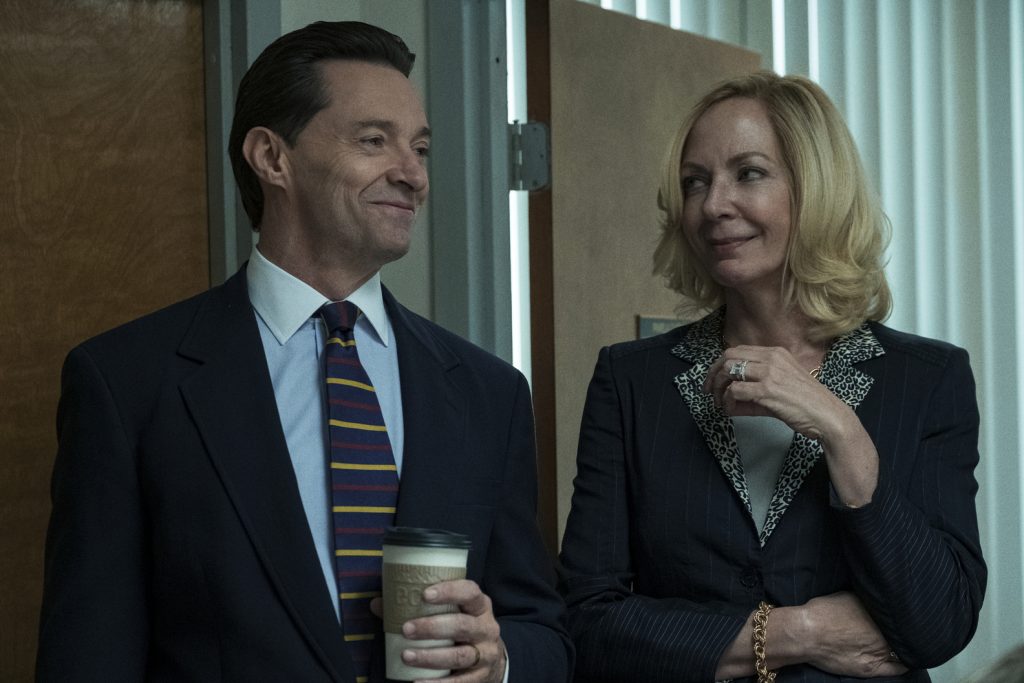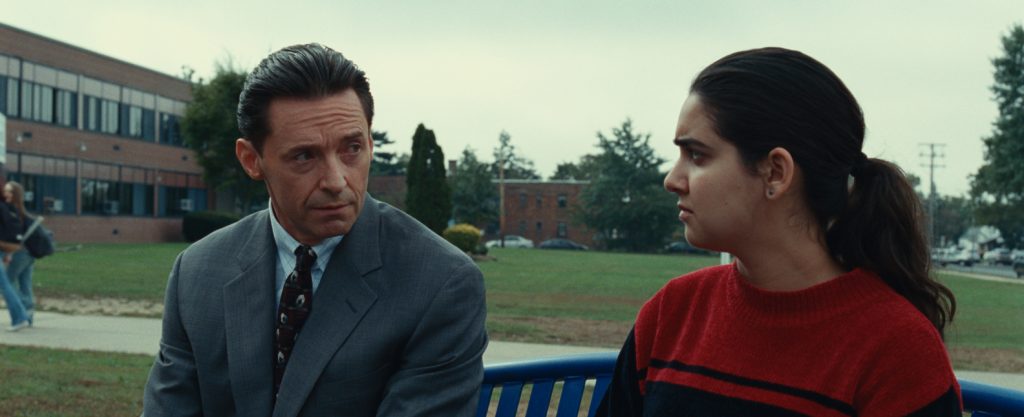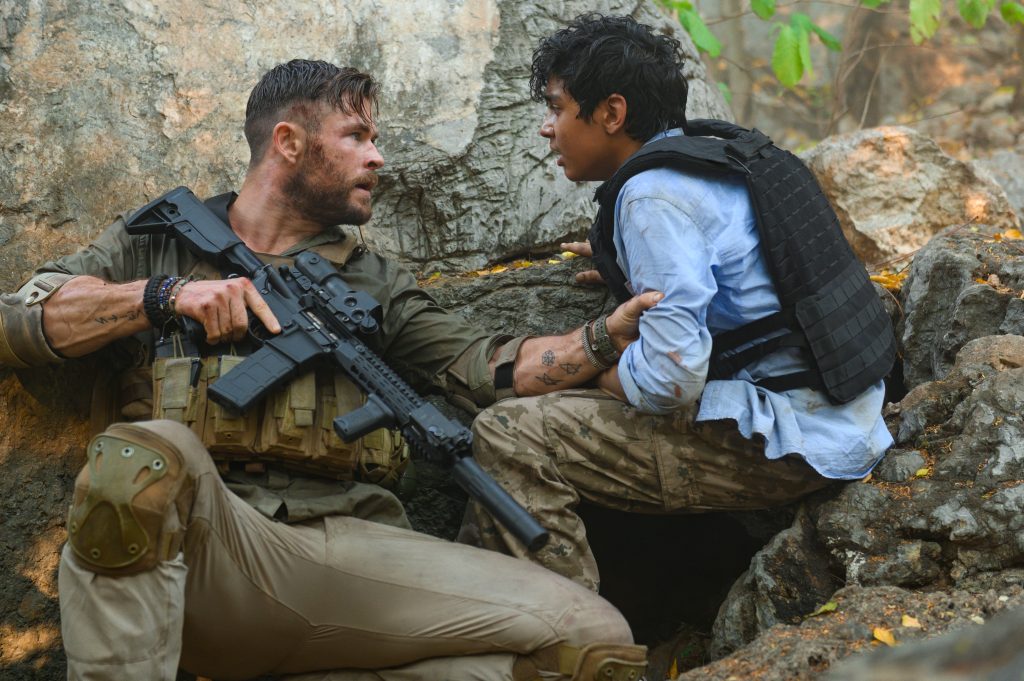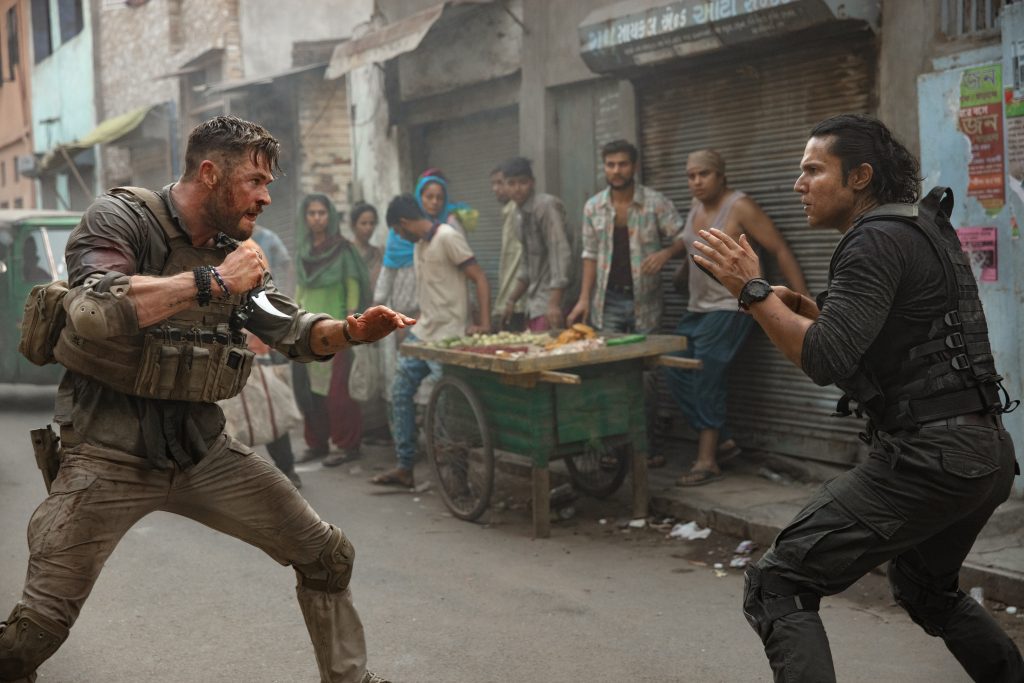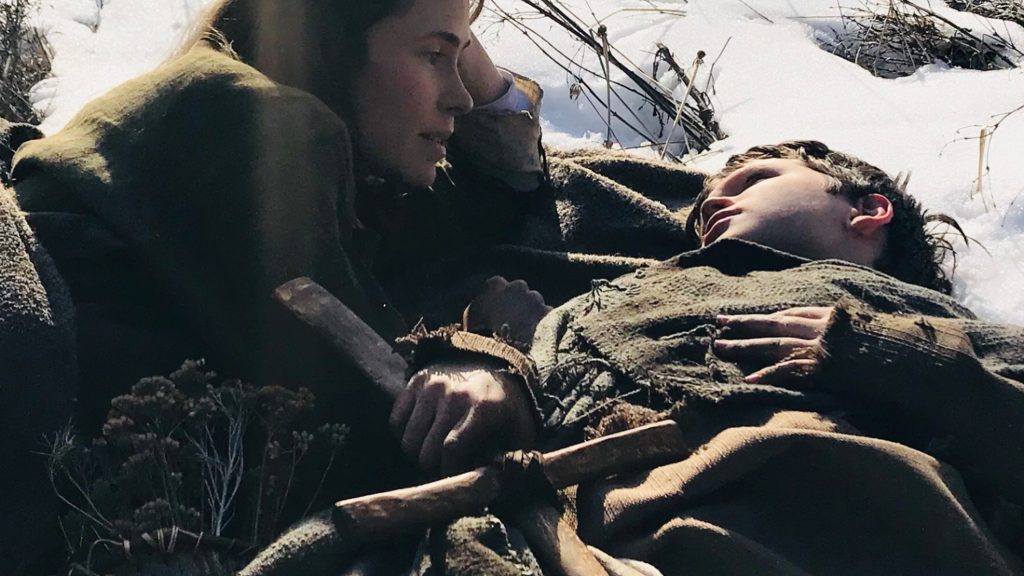April 29, 2020
by Carla Hay

Directed by Chris Bolan
Culture Representation: Taking place primarily in Illinois and partly in Alberta, Canada, the documentary “A Secret Love” has an all-white cast telling the story of middle-class lesbian couple Terry Donahue and Pat Henschel, whose relationship began in the late 1940s and was kept a secret for decades.
Culture Clash: Donahue and Henschel kept their romance hidden out of fear of homophobic backlash from society and being shunned by family members.
Culture Audience: “A Secret Love” will appeal primarily to people interested in LGBTQ issues and stories about long-term romantic partnerships that survive major obstacles.
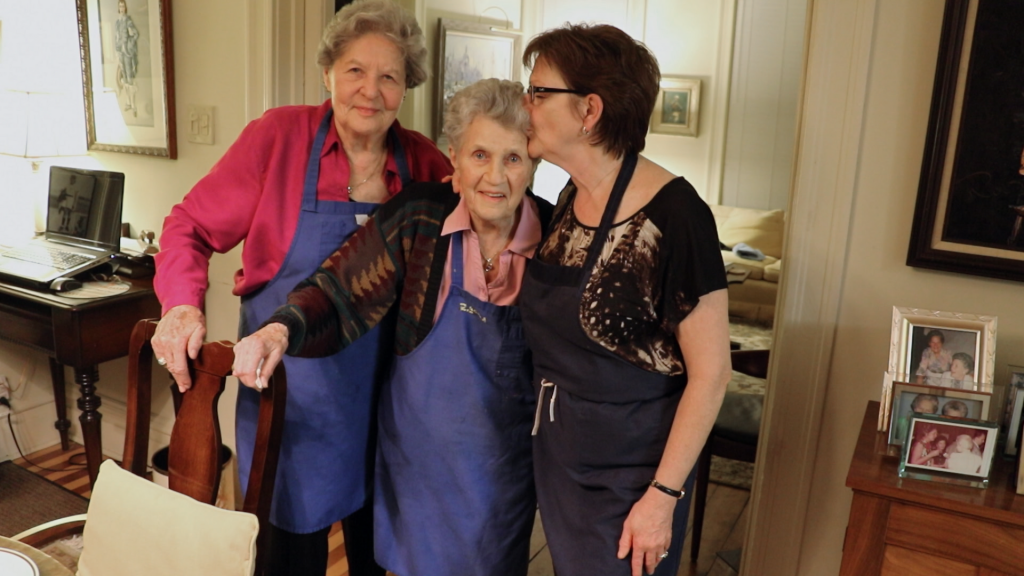
The LGBTQ community has gotten an increasing amount of representation in movies and on television, but rarely does that representation include senior citizens of retirement age. A notable exception is the emotionally moving documentary “A Secret Love.” The film tells the heartfelt and often-sentimental story of lesbian couple Theresa “Terry” Donahue and Emma “Pat” Henschel, who began their love affair in 1947, and kept it a secret from almost everyone else in their lives for decades while living together.
The documentary, directed by Chris Bolan (Donahue’s great-nephew), includes a historical look at society’s homophobia that kept Pat and Terry “in the closet” for most of their lives. But most of the movie is an intimate look at Pat and Terry’s relationship in transition, as they have to decide whether or not to downsize from their longtime house in St. Charles, Illinois, and move to an assisted-living household, since Terry has Parkinson’s Disease.
Terry’s family dynamics play a huge role in what happens. Almost all of Pat’s relatives are dead, so Terry’s side of the family (who are mostly in the couple’s native Canada, where they grew up in the province of Alberta) have a big say in what what they think should happen with the couple’s living situation. The most vocal relative is Terry’s favorite niece, Diana Bolan (the mother of this documentary’s director), who doesn’t hold back when expressing her strong opinions.
Terry says, “I love the other kids, but Diana is special. She’s the daughter I never had.” In turn, Diana gushes about Terry: “I owe everything to her.” Terry said that out of all of her relatives whom she told that she’s a lesbian, Diana was the one whose reaction was the one she was most worried about the most.
It turns out that Terry didn’t have to worry. Diana says that a few years before the documentary was filmed, her Aunt Terry told her that she was in a decades-long lesbian relationship with Pat, who Diana knew as Aunt Pat. Diana said she didn’t care about their sexuality and she gave Terry a big hug.
Tammy Donahue, another niece, had a different reaction. She remembers being shocked at the news of her aunt being a lesbian. “I feel betrayed that she couldn’t have told us sooner,” Tammy says in the film.
Terry says that it was unthinkable for her to come out as a lesbian while certain family members were still alive. According to Terry, she had a very homophobic mother and brother, who probably would have disowned her. Terry was closest to her father, who might have accepted Terry for being a lesbian, but she didn’t want to take the risk of telling him. Terry gets emotional and tears up in the movie when she remembers her close relationship with her father. “I loved my mother, but she wasn’t as understanding as Dad.”
But even though Terry’s closest living relatives accepted her sexuality after she came out to them, the documentary shows that things aren’t always so lovey-dovey in this family. Diana admits that some of the family friction comes from the long-simmering tensions that she’s had with Pat because the two women compete for Terry’s attention. As Diana says in the documentary, any politeness she has with Pat is “contrived” and vice versa. “I think we’re both playing games because of Aunt Terry.” Diana also says that she believes that Pat has purposely kept Terry isolated from her Canadian family.
Pat, who is clearly the dominant partner in her relationship with Terry, also admits that there’s some tension between her and Terry’s side of the family. “Everybody loves Terry. They put up with me because of Terry.” Pat says in the beginning of the film that she’s reluctant to move to back to Canada because she doesn’t like the colder weather there. Terry says she doesn’t care where they live, as long as she and Pat are together. The couple also contemplates moving to Florida. And there’s also the decision of whether or not to have their own home or reside in an assisted-living facility.
As these decisions are being made, “take charge” Diana comes to visit to make calls and appointments, for what she says is the necessary step for Terry and Pat to move because their current house has become too big for the couple to manage. During one visit, which Diana calls her “intervention,” she is also dismayed that Terry has lost an alarming lot of weight since Diana’s last visit.
Diana blames Pat for Terry’s weight lost, and hints that she doesn’t think Pat is properly taking care of her beloved Aunt Terry. It leads to a huge, tearful confrontation where Diana accuses Pat of keeping secrets from her and possibly endangering Terry’s health. Pat denies it, of course, but this confrontation is a turning point for what happens later in the documentary.
Amid all of this family drama, the documentary devotes a lot of time to Pat and Terry telling their love story, while putting into historical context how dangerous it was for them to be open about their romance for decades. Terry and Pat were both athletes who were part of the All-American Girls Baseball League, which included several players and teams from Canada.
Terry was scouted at age 19 and came to live in the U.S. in 1946, at the age of 20. She played for the Moose Jaw Wildcats and the Peoria Redways, while Pat had a stint with the Winnipeg All-Stars. They met at a hockey rink in 1947, when Terry was 22 and Pat was 18.
As members of the All-American Girls Baseball League, they had a little bit of fame, since the league’s games were covered by the media. The documentary has archival footage of newspaper clippings, media photos and film footage about the All-American Girls Baseball League that include Pat and Terry. The 1992 movie “A League of Their Own” (starring Tom Hanks, Geena Davis, Rosie O’Donnell and Madonna) was inspired by this real-life women’s baseball league. The documentary shows Terry signing baseball memorabilia and talking about still be being recognized in public for being a part of the league.
While Terry had a stable home life when she was growing up, Pat’s family background was more chaotic and filled with a lot of tragedy. Pat came from a family of seven siblings. Her older brother Wally was a military pilot who died during World War II at the age of 19. Her mother died two years later, when Pat was 15.
Pat’s father remarried, but she didn’t get along with her stepmother. And then, her father and stepmother died in an accident at a train crossing. By then, Pat and Terry were having a secret romance, but they gave the appearance of being close platonic friends. Terry’s family included the orphaned Pat in their family activities and treated her as one of their own.
Pat and Terry say when they were young, they dated men while carrying on a secret love affair with each other, but they never went as far as marrying any of their boyfriends. Terry had a boyfriend named Bill who would visit from Peoria, Illinois, and she remembers telling him: “You can come [to visit], but don’t bring a ring.”
Pat says she got engaged to a guy, who ended up dying young. And she said that another guy she dated when she was in her 20s also ended up dying young during their relationship. Bizarre coincidence? We might never know, but one thing is clear: Pat had a lot of people close to her in her youth who ended up dying. It might explain why in the documentary, she seems to be have a lot of trouble dealing with the grim realities of Terry’s degenerative illness and keeps putting off the idea of transitioning to assisted living.
Although it might be easy to dismiss Pat as stubborn and domineering, she shows a very tender and romantic side to her in the movie, particularly when she reads the love poems and letters that she sent to Terry. And during a dinner that Terry and Pat have at the home of their longtime friends Jack Xagas and John Byrd (who are also a long-term gay couple), Pat is the one who says she likes the idea of getting married to Terry, while Terry says that she doesn’t think they need to get married.
When Pat and Terry tell stories about the lengths they went to to hide their sexuality, it’s a reminder of the persecution they could have faced for being gay, which are still harsh realities in many areas of the world, including in countries that have progressive laws for LGBTQ civil rights. Terry and Pat also had the added fear of being deported if people found out their secret. It’s one of the reasons why Terry and Pat didn’t go to gay bars, which were frequently raided by police. The couple said that any LGBTQ social gatherings they went to in those days were limited to secretive parties.
The documentary includes commentary from some LGBTQ-rights experts, including Yvonne Zipter (an author and University of Chicago Press manuscript editor); activist Marge Summit (former owner of the Chicago gay bar His ‘n Hers); and Windy City Times publisher Tracy Baim, author of “Barbara Gittings: Gay Pioneer.” Emmy-winning producer Ryan Murphy (who’s openly gay) is one of the producers of “A Secret Love,” although he is not in the documentary.
“A Secret Love” shows what happened after the “intervention” of Terry’s niece Diana Boland to get Terry and Pat to decide once and for all what they’re going to do about their living situation. (Sensitive viewers should have plenty of tissues nearby for crying during the last third of the film.) The movie is ultimately a testament to long-lasting true love that can withstand prejudice, family conflicts and other life challenges that can often tear couples apart.
Netflix premiered “A Secret Love” on April 29, 2020.


